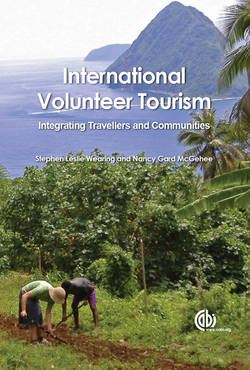Читать книгу International Volunteer Tourism - Stephen Wearing - Страница 14
На сайте Литреса книга снята с продажи.
Volunteer Tourism and Pro-poor Tourism
ОглавлениеThe worldwide interest and growth in volunteer tourism over the last 20 years has also proved to be fertile ground for the phenomenon of PPT (Hall, 2007; Meyer, 2007; Goodwin, 2008; Harrison, 2008; Suntikul et al., 2009; Theer-apappisit, 2009). While conceptually volunteer tourism and PPT are often seen as discrete elements of the tourism sector, in practice each overlap and interact in various ways.
Sustainable tourism researchers and practitioners often argue that tourism, if conducted sustainably, has the potential to reduce poverty in developing countries (Suntikul et al., 2009). However, it has only been since the early 1990s that a specific response to this goal has taken shape in the form of PPT. The principle of PPT is the following:
Tourism that generates net profits for the poor … (it) is not a specific product or sector of tourism, but an approach to the industry … PPT strategies aim to unlock opportunities for the poor — whether for economic gain, other livelihood benefits, or participation in decision making.
(Ashley et al., 2000: 2)
In many ways, PPT overlaps with ecotourism and sustainable tourism more generally in its approach to provide sustainable development for local communities so that they might achieve a higher standard of living. The difference between PPT and other forms of tourism such as volunteer and ecotourism is that PPT focuses on countries in the less developed South. ‘Poverty is the core focus, rather than one element of (mainly environmental) sustainability’ (Ashley et al., 2001: viii).
The United Nations World Tourism Organization (UNWTO) has become committed to exploring ways in which tourism can contribute to the well-being of poor communities and their environment. ‘The World Tourism Organization is convinced that the power of tourism — one of the most dynamic economic activities of our time — can be more effectively harnessed to address problems of poverty more directly’ (UNWTO, 2012: 1). Using tourism as a tool to reduce poverty makes sense given that international tourism makes important contributions to the economies of developing countries, particularly to foreign exchange earnings, employment and Gross Domestic Product (Roe & Urquhart, 2001: 3). The focus of PPT is generally economic benefits. Therefore, strategies attempt to achieve outcomes with this goal and include expanding business and employment opportunities for the poor, enhancing collective benefits, capacity building, training and empowerment (Roe & Urquhart, 2001: 5–6).
An important aspect of the success of PPT projects is volunteers, generally from developed countries. An exemplary organization that provides opportunities for volunteering and development in disadvantaged communities is Voluntary Service Overseas (VSO), which is an international development charity that works through volunteers. The majority of volunteers are skilled professionals with an average age of 41. Volunteers work on a range of projects with the aim of imparting their knowledge and skills to locals. Placements are typically 2 years, with some projects in communities being up to 12 months long (Voluntary Service Overseas, 2012).
